Seating Arrangement Problems
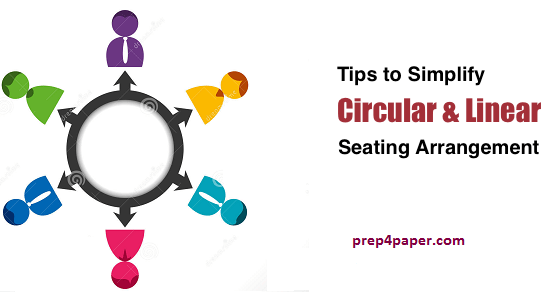
There are two types of ‘Seating – Arrangement’ questions: 1) Circular-Sitting (on a round table): Whenever people are sitting on a table then there are three cases.
2) Linear-Sitting in rectangular row or table.
Seating Arrangement problems are very easy to solve, at the same time they can be very time consuming and confusing if you don’t move in a proper and a systematic manner. There are no shortcuts to solve these questions; only correct strategies. Here are a Few tips to solve the seating arrangement questions:1. Draw a diagramComing to a solution becomes easy with a diagram and questions are solved easily and quickly. Convert all the given information into a graphical form or a diagramatic form, as per your comfort. When marking the position in your diagram, check if the people are facing inwards or outwards. For circular arrangements people are either facing inwards or outwards. Your diagram will vary accordingly. However, if nothing is specified then by default they face inwards. Sample Question: 6 Boys are sitting in a circle and facing towards the centre of the circle.
Step 1: Draw a circle and mark 6 places on it. Remember that all are facing to towards the centre.
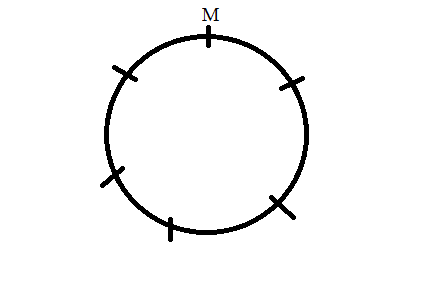 Step 2: Place Mohan at the top of the circle and mark the position of the remaining 5 boys accordingly. Step 3: According to Condition 1: Mark Raja to the right of Mohan (1 place anti-clockwise) and cancel the next position for Vijay. 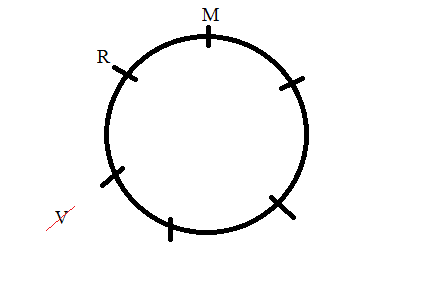 Step 4: According to Condition 2: Position of Suri, Babu and Vijay can be either BSV or VSB. Because we are not sure, don’t mark anything on the diagram yet. Read the next condition for more information. Step 5: According to Condition 3: Aman and Vijay will sit together. For them to sit like this: AV, the position of Babu and Suri should be to the right of Vijay: AVSB So the final placement is: 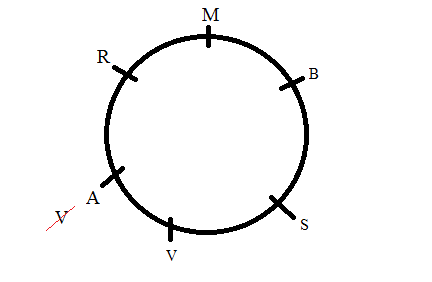 Once you have completed the diagram based on the specified conditions, then you can crack the entire set of questions within seconds, just by looking at the diagram. But having said that, the biggest disadvantage of these types of questions is that a single mistake in interpreting any condition can ruin the entire diagram/solution and consequently you will not get any answer correct and hence lose all the marks. Therefore, once you ave drawn the final diagram you must double check the diagram for given conditions. 2. Break the problem down into smaller problemsDon’t read all the conditions together. Read them one by one and solve accordingly as illustrated in the solved example above. If you don’t have 100% clarity about arrangement of information any condition, write it down beside you figure. Don't write full conditions, write in shorthand. 3. Be careful of directionsBe extremely careful of who is to the left/right of whom. Draw arrows in the figure for better understanding of the diagram. Let’s try another problem. This one is on linear seating arrangement: Sample Question: A, B, C, D, S and Z are sitting in a row.
Who is to the right of B? A) AB) D C) S D) Z The seating arrangement is as follows:
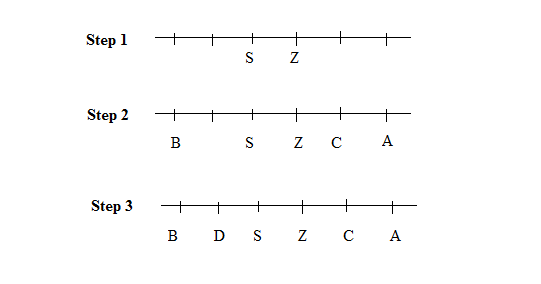 The position of S and Z can be interchanged since there is no clarity about this through the given conditions. Therefore, right of B is D Solved Example: A, B, C are three boys while R, S & T are girls. They are sitting such that the boys are facing the girls.
Who is sitting opposite to B? The two possible cases are: 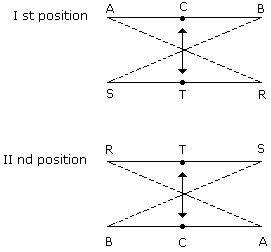 Hence, R is sitting opposite to B. Students must practice a lot of questions on these type of problems, the more you practice, the better your skills at solving such questions will be. Set 1:A, B, C, D and E are sitting on a bench. A is sitting next to B, C is sitting next to D, D is not sitting with E who is on the left end of the bench. C is on the second position from the right. A is to the right of B and E. A and C are sitting together. In which position A is sitting ? A. Between B and DB. Between B and C C. Between E and D D. Between C and E Answer: Option B.Explanation: |